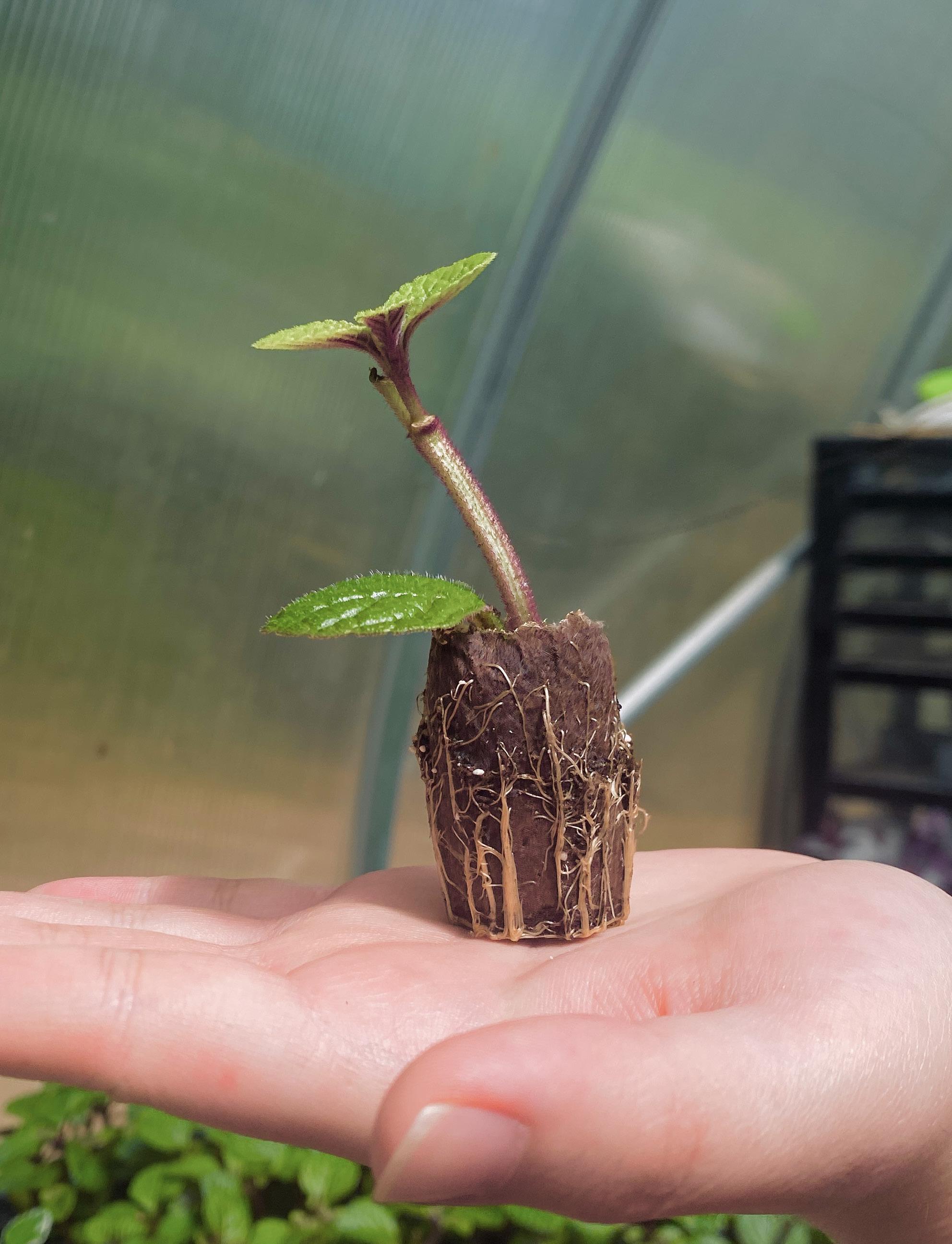

42

Book Reviews
Astrophysics for People in a

A Love Letter to AP Chemistry
Contest Winners
Page 28
Photography Contest: Pet Pics!
Art Galleries
Pages: 12 & 46



42

Book Reviews
Astrophysics for People in a

A Love Letter to AP Chemistry
Contest Winners
Page 28
Photography Contest: Pet Pics!
Art Galleries
Pages: 12 & 46
At Teen Ink, we love learning about and sharing so many of your interests. We’re thrilled to announce that, in this issue, we’re exploring even more of the Teen Ink community’s passions — STEM!
We have noticed that many of you share a love for science, technology, engineering, and math! That’s why we’ve decided to focus an entire issue on these topics and feature some of the best STEM-related pieces submitted to Teen Ink. From careers in engineering and thoughts on gaming to heroes of STEM and more, we can’t wait for you to see everything included in this issue!
As always, we welcome your feedback! If you want to write a letter to an editor, respond to an opinion article, or just take a stab at creating a poem good enough to make it into our next magazine, visit teenink.com/submit!

Best wishes!
The Teen Ink Team

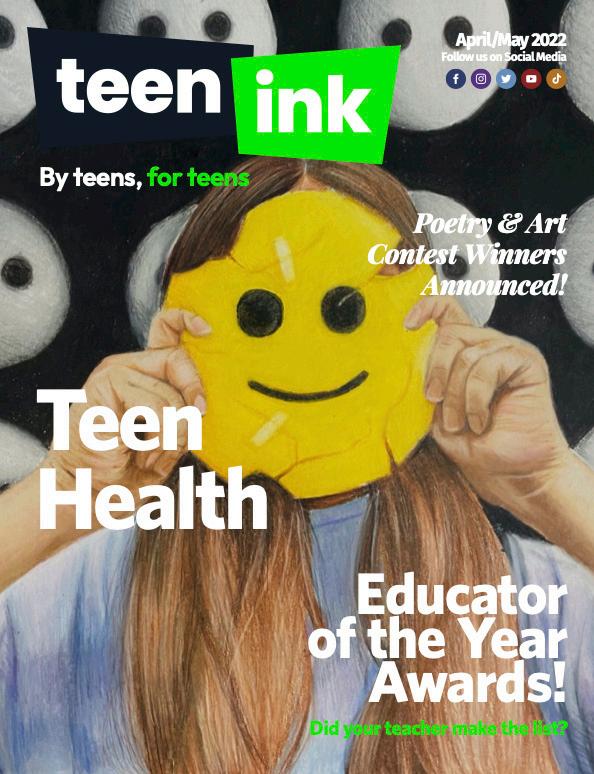
 ARTICLE BY ALEC DAMON, HARTLAND, WI
ARTICLE BY ALEC DAMON, HARTLAND, WI
In eigth grade, I was in robotics class working with Vex robots, when I successfully programmed a motor to rotate a crane mechanism. I felt very proud and accomplished; this was when I knew I wanted to work with robots and program them when I grew up. I have always been very interested in anything dealing with computers, robotics, and programming. When I came across automation engineering while touring Waukesha County Technical College, I instantly knew that it was what I wanted to do after high school. Seeing all of the different robotic arms and what people had programmed them to do hooked me into wanting to become an automation engineer.
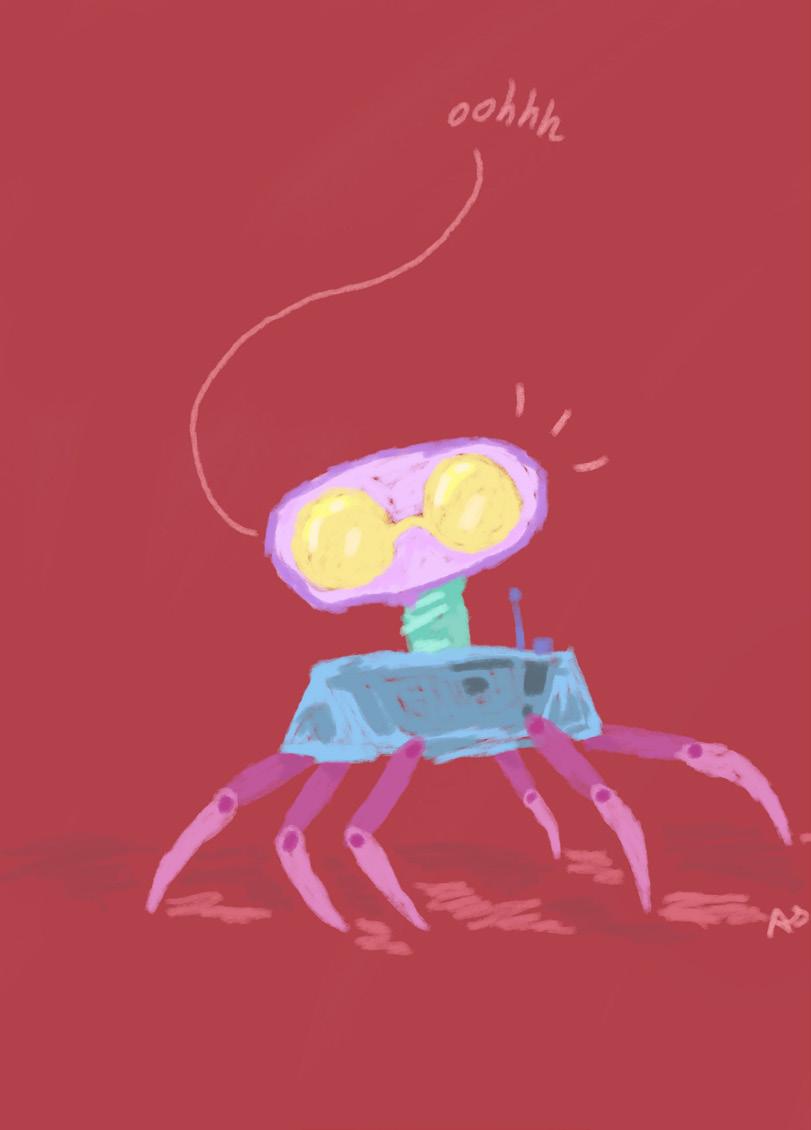
Since I was a kid, I have wanted to work with computers and do anything that dealt with using different technology in my future career. Whether it was 3D modeling different parts, putting together computers, helping others with their computer problems, or even building computers, I wanted to do it all. My ability to quickly learn and adapt to using different things to solve problems is something that will allow me to excel in the automation industry, and that realization alone is what made me want to pursue my dream career of being an automation engineer.
Throughout my education, I’ve been introduced to many aspects of the industrial and engineering fields. I have taken classes that taught me how to design parts in CAD (Computer-Aided Design) programs and make various items using techniques, such as welding, plasma cutting, woodworking, staining, and painting. I even took a
class that focused on machining different parts to create a final product. These have allowed me to familiarize myself with many programs and processes that automation engineers deal with daily.
Recently, I started researching what
example, shipping companies, such as Amazon, utilize autonomous distribution centers to minimize the number of workers they need and to maximize the efficiency of their delivery process so that you can get your package as quickly as possible. This means that there will be a great demand for automation
automation engineers do and what skills are essential to the position. Automation engineers need to be great at problem-solving and thinking of the most efficient way to solve the problem. Some of what automation engineers do is streamline manufacturing processes, program robotic arms to complete tasks, work with computers to program automation systems, and automate different systems to maximize efficiency.
There is a promising future in the automation field, being that a lot of manufacturers and distribution centers are starting to become autonomous. Companies can now run “lights-out,” which means that the machines can keep producing parts or products without needing anyone there to operate them. For
engineers in the future, which means that it will be an up-andcoming field to get into.
To obtain this career, I intend on going to WCTC and enrolling in automation classes that focus on programming robotic arms and learning to program different systems to automate processes. Once I complete these classes, I would love to find an internship to start using my knowledge and gaining experience in the automation field. Through that internship, I hope to get a job in automation so I can finally accomplish my dream of becoming an automation engineer, programming robots, and streamlining operations.
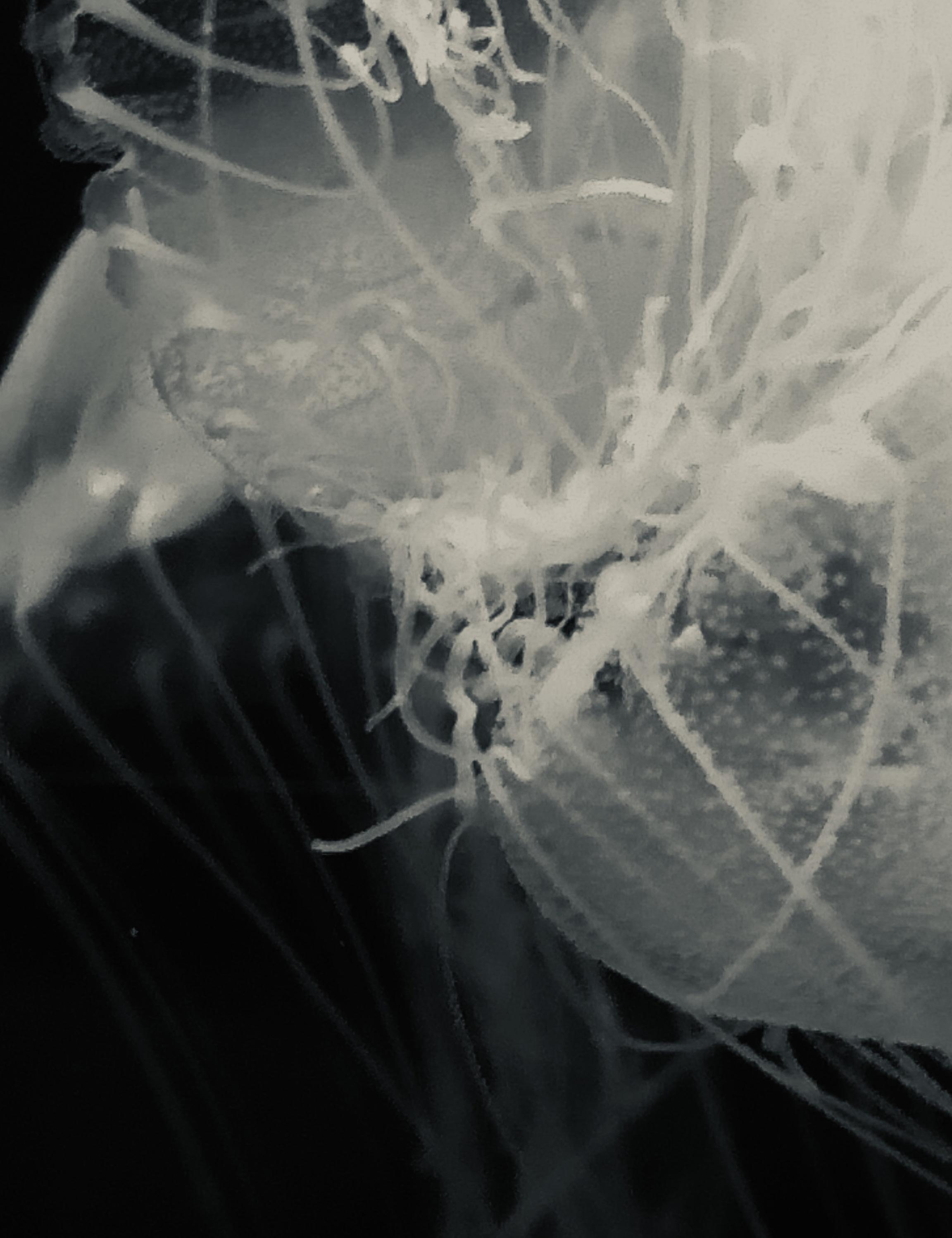
Ever since I can remember, I have loved everything about water and its components. From being taken on the nearest lake at 18 months old, to being rushed into swimming lessons, and even becoming scuba certified at 10 years old; I must’ve been in the water more than I wasn’t. For me, H2O is the picture of happiness. My dream careers as a child were anything but typical. Most kids want to be an astronaut or a professional athlete, but my jobs spanned from an exotic animal veterinarian to a dolphin trainer. Although they might not smell pleasant, all these careers have one thing in common — learning about animals. As I aged, I cultivated an affinity for the sciences, more specifically biology. I adopted it naturally. With my love for wildlife, biology, and most importantly water, the answer was clear. I had my heart set on being a marine biologist.

My dream of becoming a marine biologist became ever more prevalent as my family traveled. We visited locations with the most biologically diverse sea life in the world. My favorite place I’ve ever submerged myself in has to be San Pedro, Belize. It is where, initially, I learned to scuba dive. Off the coast are the Belize Barrier Reef — the second largest reef system in the world, and largest in the northern hemisphere — and mysteries like the Great Blue Hole, a place that feels otherworldly. It is truly a beautiful place. I deem myself one of the luckiest people to inhabit this Earth to have been certified in such unique waters. Being able to visit places like these, and get paid, surely would be a dream come true.
To become a marine biologist, one needs a minimum of a bachelor’s degree. A master’s degree specializing in aquatic studies and marine biology will also give one an advantage when searching for employment. My dream university to continue my education is the University of Hawaii, Manoa. Here,
on an island surrounded by the world’s largest ocean, I would have the perfect opportunity to learn about what I love. If I were able to attend the University of Hawaii, there would be plenty of possibilities for marine-focused students to travel abroad and explore other aquatic areas of the world. Traveling and learning? Count me in.
The duties of a marine biologist do vary. They can study anything from the largest mammal on earth, the blue whale, to the tiniest species of nanoplankton. Marine biologists can investigate the behavior and physiological processes of marine species, even the diseases and environmental conditions that may affect them. Most importantly, they assess the impacts of human activities on marine life. With the endangerment of marine life crises spanning all over the world, this job has become ever more important — which is why I want to help.
Marine life is projected to experience a mass die off that could rival the largest mass extinctions in Earth’s geological history if worldly use of greenhouse gasses does not diminish. Not only are temperatures of the ocean rising, but there is a build up of pollution. An estimated 14 tons of plastic invade the oceans. A large amount of these plastics can be categorized into microplastics. Today, microplastics have been detected in a large number of species of marine life, in commercial seafood, and even in our drinking water.
It is important to me to have a job that I love. If I got the opportunity to take steps toward preserving the ocean life for future generations to enjoy, all while traveling, getting paid, and most importantly helping, I would consider my life to be complete. It would be my dream.
Marine biologists can investigate the behavior and physiological processes of marine species, even the diseases and environmental conditions that may affect them
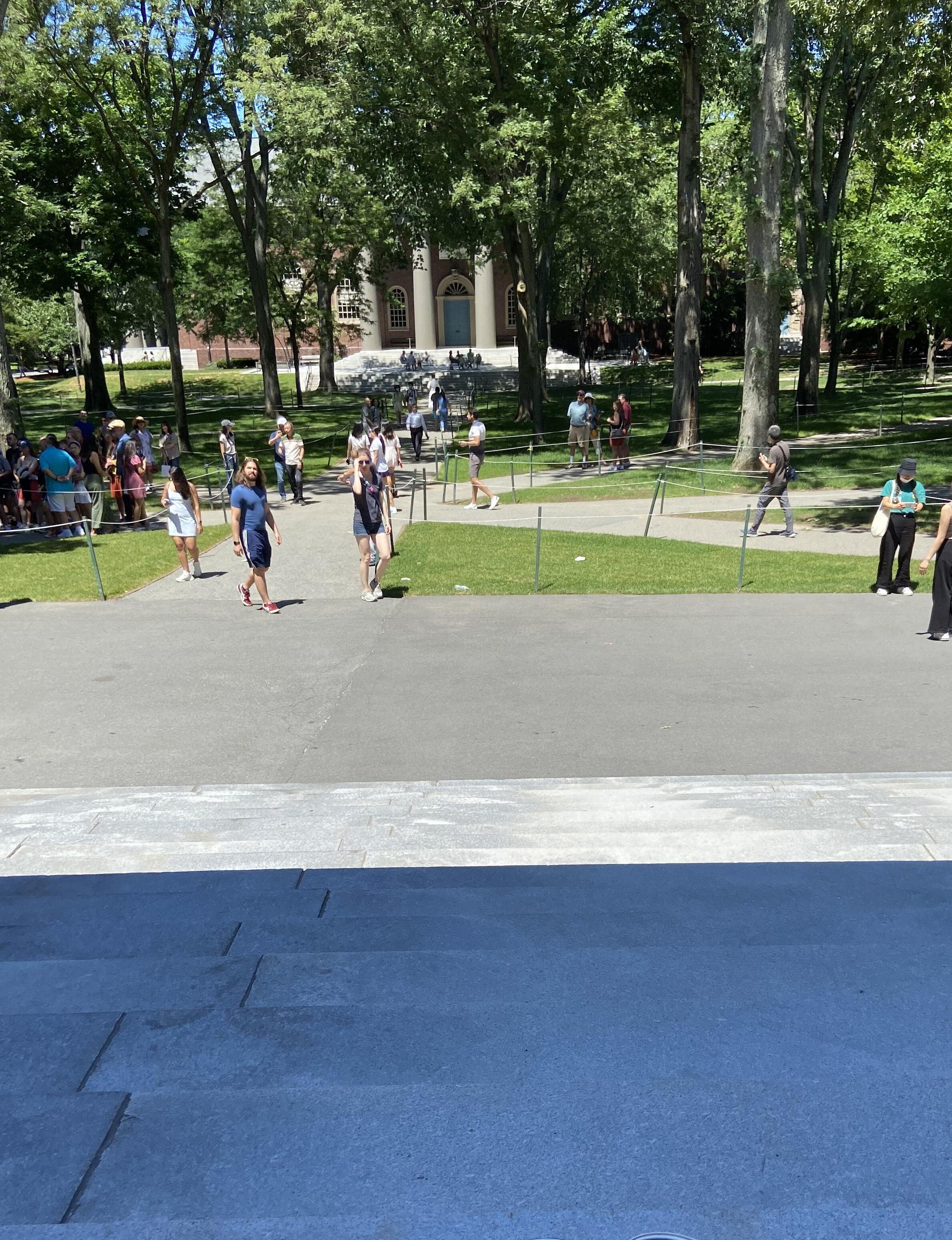

Engineering is more than just using math and science to invent things. For me, engineering means a way to discover about our world and find ways to make our lives and society better. Engineering is also a way to test yourself and see how creative one can be. However, this way of thinking was not always the case. I once thought engineering was merely designing and building things like what inventors do. Now I know engineering is far more complex and a very intriguing study, and it can be taken both recreationally and professionally. So, what changed, and most importantly, what gave me certainty of the profession I want to pursue?
Well, choosing a profession is important, and I decided I needed to experience the daily routine of an engineering student and/or
having an insightful conversation with a research graduate student at the MIT astrophysics department in Boston. I was able to see and learn the equipment, data, and information used to discover the existence of other planets, though it never fully piqued my interest. I encountered a surprisingly fun and engaging experience at the Engineering Technology housing program camp at Pennsylvania College of Technology — Penn State, where I embraced the “college” life of staying at college dorms, eating at college cafeterias, and attending hands-on classes and workshops.
professional if I was serious about becoming an engineer. I also decided it was just as important to visit the different engineering departments of some of the most prestigious universities to become acclimated and familiar with different resources and mindset. Luckily enough, there is a diversity of summer camps, classes, and workshops available for highschoolers to attend all over the world, and there are university tours available all year long.
During the summer of 2022, I chose to embark on a small, but helpful expedition. I was able to eliminate astrophysics engineering after participating in an interesting and informative course at Case Western Reserve University and
It was a surreal experience. We were able to experience the different fields of engineering. We had a nine-to-five schedule with classes ranging from one to three hours. These classes consisted of engineering workshops that included information and hands-on activities with machinery and gadgets in different fields, such as manipulating plastics and polymers, welding, manufacturing, civil and electrical engineering, and more. In addition, we attended lectures and Q&A sessions with professional engineers who provided us with relevant information about their field. Having a brief glimpse of what college life is all about — roommates, meeting students from different parts of the country, and independence — was the cherry on top.
Engineering is a fascinating, multiplex field, and having the opportunity to become acquainted with the different branches is important for a high school student who is in the process of selecting a major. Institutions like PCT are a great place to start. Now, not only do I know what I want to study, but I am also eager to continue the work I started with my teachers and classmates back in my summer semester in 2022. I foresee lots of fun, creativity, growth, challenges, hard work, learning, impact on society, collaboration and great friendship among professionals. I hope you find the same results in your future, with engineering or in any other field.
FOR ME, ENGINEERING MEANS A WAY TO DISCOVER ABOUT OUR WORLD AND FIND WAYS TO MAKE OUR LIVES AND SOCIETY BETTER
CREDITS
1. PHOTO BY MIAOFU TIAN, WINSTON-SALEM, NC

2. ARTWORK BY BREANNA FLETCHER, HOUSTON, TX


3. ARTWORK BY ZHILE (JULIA) ZHOU, BEIJING, CHINA
4. ARTWORK BY VIKTORIA АNOKHINA, LENINSK-KUZNETSKY, RUSSIAN FEDERATION



Perpetual motion is impossible. We currently know it cannot be achieved since it violates both the first and second laws of thermodynamics. Despite this, I wanted to make a magnet-powered car for my eighthgrade passion project — essentially, the repulsion or attraction of the two magnets would allow the car to continuously move forward and backward. While I was not able to complete my vision, that being because I had to hold and guide one magnet as the other remained statically attached to the cart, the rabbit hole in which I fell down has guided me through my high school career and life plans.
I didn’t find a passion for physics until a little while later. It was my sophomore year of high school, and I was sitting in my first-period English class. I noticed a book in my teacher’s library, Richard Feynman’s The Feynman Lectures on Physics. So I, of course, had to ask my teacher if I could borrow it. I had heard, watched, and read about Feynman since I had originally gotten caught up in my eighthgrade passion project, but having the book allowed me to continue to find my passion for the subject. I read endlessly — during math class, at family gatherings, and in the car. I darted straight to my school’s media center once I finished that book. I picked up everything I could find: VOID - The Strange Physics of Nothing, The History of Physics, and 7 Brief Lessons on Physics. The more I read, the more the subject intrigued me — gravitational potential, theory of special and general relativity, quantum mechanics; every new topic made me want to learn more. However, it wasn’t just physics; the concept that there were many other subjects that I knew so little about intrigued me. After all, Feynman did say, “The greatest joy in life is the pleasure of finding things out.”
From that point on, all the decisions I’ve made, whether that be making my schedule or applying to summer programs, have been to further my passion for learning. For me, that looks like loading up my schedule with the hardest classes — learning Coulomb’s Law, Maxwell-Boltzmann distribution curves, JavaScript, elasticity in terms of economics, and how to properly
appeal to my audience using ethos, logos, or pathos. All while my classmates have taken the easy way out, having two free periods or only taking core classes. It looks like reading nonfiction book after nonfiction book fills my brain with all the information I can possibly remember; it looks like asking my teachers questions to further my understanding of the subject. While many may “never wander” to this point of their academic career, I felt in order to “live deliberately,” to have a purpose, I had to do this. I had to continue to learn.
Henry David Thoreau wrote “Walden” on the basis of stepping away from a materialistic society. His journey to Walden Pond was meant to contemplate the meaning of life and find a man’s role in it. I’ve lived off the idea that “we are earnest to explore and learn all things” and “we require all things be mysterious.” My Walden Pond, my “inexhaustible vigor,” will always be at my desk, learning something new; that being anything as simple as the views of political figures or as complex as taking the integral of a function. The “vast Titanic features” in Massachusetts that Thoreau witnessed, are my thousand-page physics textbooks or 20-minute-long calculus YouTube videos I watch for fun.
Though I had not been able to disprove the laws of thermodynamics in the eighth grade, I had found a passion that would carry with me for the next three years — learning. Since then, while friends and classmates go out on Friday nights, I stay home studying for the SAT, reading reports the Federal Reserve published, or reading articles published by a number of different science professors. My purpose in life is to continue exploring and learning. To continue reading an endless amount of physics books. To continue staying up until three in the morning watching That Organic Chemistry Tutor go over the basics of Calculus. And maybe by doing so, I will be able to prove Julius Mayer and James Joule wrong and make a perpetual motion car.
THE RABBIT HOLE IN WHICH I FELL DOWN HAS GUIDED ME THROUGH MY HIGH SCHOOL CAREER AND LIFE PLANS

Under that night sky, I could vaguely see the outside through a window that was blocked by a myriad of metallic pieces. I have not the slightest idea of time or the time passing by. All I knew was that it was dark outside, so dark that if you put your finger in front of you, you would not be able to tell it apart from your the rest of your hand.
I was not the kind of person who usually stays out this late, perhaps I was over-cautious about breaking my curfew. Most of the time I preferred to spend my Friday night inside my dorm, waiting to check in at 11 o’clock. However, tonight was not like the others — instead, I was in the only robotics lab on campus.
George, my mentor who was only a junior, coughed to attract my attention. He tried to make the cough sound natural, but it was still easy to tell that it was not. I put down the C-channels in my hands and looked up. George was still looking at his computer, probably a YouTube video or something, but he turned so his screen wasn’t facing me. “Grabbing a fish,” that’s what Chinese people call those who don’t do their work.
“Do you know what time it is?” George asked without looking at me, trying to cover his guilty conscience. “It’s not…” Without me even finishing, George interrupted me: “Oh! It’s already that late? Sorry, but I have to go.” With that, he ran out the door like I was something terrifying.
Well, now that George left as well, I was the only person in that lab. It made sense, because who would be out working this late on a Friday night? Except for me, I was the last one out in this world, the last person under the night sky in this room full of metal sheets, screws, nuts, and a metallic monster.
It was already January, not much time left until the competition began — about two weeks to be exact. Our robot was still not ready yet. To be honest, it was nowhere close to ready. We did have four wheels and a functioning arm, but that was basically it. From time to time, a screw or two would fall off and it would be
PHOTO BY EIMY ROMERO, LEWISVILLE, TXimpossible to find where they came from. This project started last September when a group of ambitious young men came together to build a robot to attend the VEX Robotics Competition. The team worked well and dreamed well together at first; however, progress started to slow down. January seemed to be so far away.
Now that it is just me in the lab without the rest of the team, I must figure something out. I kept telling myself that I couldn’t give up yet, that we still have a chance to finish this robot before the competition.
However, I just couldn’t put away the looks on my teammates’ faces in my mind. The disappointment, the defeat.
I tried to tell them that we were still in this together as long as we kept putting in our best effort, but none of them listened. They already admitted defeat, and why sacrifice more for something that was already doomed?
My hands were sweating so much that the chain and gears kept slipping out of my hands. I still have faith in our robot. The moment we put the first pair of screws and nuts together is the moment we gave life and purpose to our robot. As long as I haven’t given it all yet, I told myself over and over that I couldn’t give up.
My whole body was sore from bending in an extremely uncomfortable position. I had to hold the robot on its side and make sure it didn’t fall and break my nose, and at the same time, I had to bend down and put a nut on the bottom of the robot. Everything was due to poor planning; if we had worked harder before, we would probably be done by now. I finally realized how crucial time management and having a plan is.
Tick-tock, tick-tock. The night kept getting darker, but the lone silhouette in the lab seemed to glow. He was getting stronger, being the last one out under this beautiful night sky.
THE MOMENT WE PUT THE FIRST PAIR OF SCREWS AND NUTS TOGETHER IS THE MOMENT WE GAVE LIFE AND PURPOSE TO OUR ROBOT
 ARTICLE BY ANJULI IRVIN, WILDWOOD, MO
ARTICLE BY ANJULI IRVIN, WILDWOOD, MO
Have you heard about a recordbreaking flood, or temperatures rising? Have you also heard about extreme wildfires, drought, or even a strong tornado?
During the summer of 2022, I tracked the weather everyday in my state of Missouri, in the U.S. I wanted to see how extreme weather conditions as a result of climate change may have manifested in my own home state. I will break down the results for you all, focusing on severe weather conditions and temperature extremes.

First of all, let us talk about temperatures. Starting even in early June, temperatures in my state were already in the 90-degree-Fahrenheit range. High temperatures were regularly 94 or 95 degrees for the first two to three weeks of June. Interestingly, there was a single week when high temperatures were all above 90 degrees, and this was between June 13-18. In the first two weeks of July, high temperatures fluctuated from 95 to 80 degrees, with about half the days then having a high over 90. In late July, temperatures persisted: a bit less than half of the days had a high temperature of above 90 degrees. Lastly, in August, temperatures cooled down a bit. For the first week, most high temperatures were 94 or so, but after Aug. 7, high temperatures did not often exceed 90 degrees. This trend has continued until now, as of Aug. 23.
As for some context on what all this means, it is indicative of a larger trend on Earth. Recently, the world has had some of the hottest summer temperatures on record, and if the data I recorded is any indication, it is only going to get worse. Where I live, temperatures typically do not reach 90 degrees as often as they did this summer. This is especially true for early June, where temperatures were already in the 90-degree range, despite summer not officially starting.
As for weather patterns, severe weather was occurring less frequently than in previous summers, but when it occurred, it was not any minor incident. In very late May, there was a strong cell of storms that passed through my state, and they produced several funnel clouds. Several tornadoes formed as well, which damaged
these states are experiencing the same threat of climate change and destruction of Earth through severe weather. It ultimately does not matter what I have seen, as we already know what climate change is doing to the Earth. Droughts, hurricanes, tornadoes, etc., are just the beginning of climate change’s cruel reign.
homes and older buildings. Strong storms were not as prevalent for the rest of the summer, as they only occurred two more times in earlier July (and were not all that severe, causing minor damage in hail to cars or weaker objects). However, I saw firsthand the effects of another event, flooding. There were several days of heavy downpours and flash flooding in late July, leading into early August in Missouri. All caused destruction to basements and swept away objects and cars in low-lying areas. It was very saddening to see this in my state, and it showed me the devastating impacts of climate change. These events do not usually cause so much damage, but in the past few years, floods have been happening more consistently. They’ve grown more severe over time as well, and some homes have had to be rebuilt every couple of years now in the flood plains (low areas).
I cannot overstate the importance of understanding the threats climate change poses to our planet. Wildfires may be raging in the American West, or hurricanes may be targeting states near the east coast of the U.S. However, all of
However, if you, the reader, are seeing this and feeling overwhelmed and anxious, please do not be. We still have time to limit the effects of climate change, but please do the best you all can individually to make a positive impact on the environment. Simple things like biking to a friend’s house or reducing your consumption of meat can help limit greenhouse gasses, which can in turn help keep our planet safer from the destructive rage of extreme weather. I encourage you to even share this article with friends and family to help motivate them to do their part. It is vital that everyone knows to never give up hope in the fight against climate change and extreme weather. If all you hundreds — or perhaps even thousands — of readers are willing to research small ways to reduce your carbon footprint, I will truly have more determination that the destructiveness of severe weather and climate change can be mitigated.
DROUGHTS, HURRICANES, TORNADOES, ETC., ARE JUST THE BEGINNING OF CLIMATE CHANGE’S CRUEL REIGN
 PHOTO BY ISABELLA WANG, SHANGHAI, CHINA
PHOTO BY ISABELLA WANG, SHANGHAI, CHINA
The robot drove back to collect the remaining two balls. Finally, it was at the correct angle. This time, as it approached the goal in the center of the field, I could tell that it was going to work.
At the start of every FIRST Robotics Competition (FRC) match, robots operate without human input, attempting to shoot as many balls into the goal as possible. It had taken a lot of effort in my junior year on my school’s team, but we had finally gotten the autonomous modes working. We had achieved the maximum of five balls. Autonomous modes were the culmination of all the software I developed for the team. I was the only student working on code and didn’t have FRC-specific experience. I had to learn as I went, using a combination of old code and documentation. I programmed the logic to coordinate subsystems, translate preprogrammed autonomous paths into motor velocities, and properly correct for errors with control loops.
I’m proud of how much I contributed to the team during my junior year; however, it wasn’t easy to get to that point. Back in my freshman year, I was not as involved as I wanted to be. I felt underqualified and struggled to proactively ask to help — I usually ended up observing.
In my junior year, I wanted to become an active contributor. There was little veteran experience on the team after one-and-a-half seasons were canceled, giving me an opportunity to step into a more impactful role. Our team had decided on an overall robot design, and it was time to digitally model every part. A week in, the four people doing the most work were all sick, which put me in a position to step up — I designed two critical robot subsystems. When I made mistakes, my peers helped solve the problem instead of blaming me and taking over. Every day, I had a clear purpose and left having contributed to the team’s success. At that time, it was the most fun I had on the team.
When we moved on to physically assembling the robot, my impact shrank. I didn’t want that trend to continue. I knew that assembly was not my strength, but programming was: I could contribute to designing the software that would bring our complex robot to life.
When the robot was almost complete, I knew I had to take the initiative and put myself forward, something that had been hard for me in the past. When I did, I was immediately put on the two-person software team: a new mentor and me. Together, we were able to get the robot driving with teleoperated human input, and all the moving parts synchronized to pick up and shoot the balls. Finally, we programmed routines to automatically shoot with the correct trajectory and velocity based on vision processing and completed the autonomous modes.
I love programming for the cognitive challenge and tangible rewards. The feeling of solving a particularly difficult problem is
unparalleled. There is something so satisfying about working through the logical steps to make a machine function as I want it to — it is exhilarating.
Working on the robot code for my team gave me an opportunity to do what I love with real stakes. Everything had to work with no issues, lots of features needed to be added, and time was very limited. The pressure only increased my enjoyment.
I have finally discovered my niche on the team, where my interests and aptitude meet the team’s needs. I have a voice and can meaningfully contribute to our success. I have learned what it means to be on a team: working together to achieve a goal, making connections, and having fun along the way. Now, I know the value that I bring and am ready to push us to new heights. I hope to help new team members find their own niches.

I HAVE LEARNED WHAT IT MEANS TO BE ON A TEAM: WORKING TOGETHER TO ACHIEVE A GOAL, MAKING CONNECTIONS, AND HAVING FUN ALONG THE WAY.
Imagine someone was working on a project that was very important to them. Maybe it was something for work that they were getting paid for, or maybe it was just for fun. Now imagine someone took little pieces of their project and combined them with pieces of other peoples’ projects to create something new. How would they feel? This is a very real scenario for artists who post their work online right now. AI has become increasingly prevalent around the world in recent years. In my opinion, AI art is bad for several reasons, including how it is made, artists’ opinions on it, how it obscures the definition of art, and more of the general issues with this art.
AI art is typically defined as art that a machine has generated with a learning process. In the article “What is AI Art? How Artists Use AI, and How To Generate Your Own,” written by Lauren Duplessis for domestika.org, it says that AI art and AI, in general, involve machine learning. It relies on an algorithm that has a databank, and a model that makes or does something with the data. In the case of AI art, the AI collects images online and transforms them into something else. What the AI makes depends on what the user puts into the prompt. To make these AI images, it is common for people to use random images they find online. The issue with this is that they don’t have permission from the owner of

the image. As I see it, it’s a problem when someone takes something and uses it without the creator’s permission; I would hate it if my art was used like that. Just because someone puts something out for others to see, doesn’t mean that viewers have the right to use it. This opinion causes a lot of disputes because some people say that artists’ posting their works publicly means that people can use them.
Due to this, people are very divided on AI art: some are all for it, some are against it, and most have a more neutral stance on it. There are a lot of reasons why AI art is liked — some claim that it makes art more accessible for those who may not have the opportunities or skills
to make their own art. All people have to do is enter a few words into a generator, and it makes something for them; it’s much easier than actually putting time and effort into something. In addition, “The Ethical Pros and Cons of AI Art,” written by Electra Nanou for MakeUseOf, says that there are many pros and cons to using AI art. Some of the pros are that people don’t have to pay for it and that anyone can make it. The cons are listed for more ethical reasons. AI generators learn from artists’ work without permission, resulting in artists not receiving money for their work and losing revenue. I find issues with the pros, especially the one that states that AI art allows everyone to make art; I believe everyone can make art, even if it’s not good. I also don’t agree when they said that a pro was people not having to pay for art — people pay for the service of having art made for them. People also pay to have other things made for them, like jewelry. Why should art be any different? Why shouldn’t artists get paid for the work they do?
These questions lead to one of the main debates about AI art, which is, “Is it actually art?” The definition of art is subjective and can mean different things to different people. According to the Oxford Dictionary, art is defined as “the expression or application of human creative skill and imagination, typically in a visual form such as painting or sculpture, producing works to be appreciated primarily for their beauty or emotional power.” Most would describe it as someone creating something to express themselves or their imagination. An article by Ahmed Elgammal, who is the founder and director of the Art and Artificial Intelligence Laboratory at Rutgers University, states that creating art
is not just about the outcome, but the process. Art is directly related to human creativity. How creative is it if people are just entering words and generating images? How can people find pride in something if they didn’t put time and effort into making it? How is typing words into a generator expressing imagination? It depends on how people define art. I would say that because art is tied to human expression, AI art shouldn’t be classified as art.
Besides the dispute about the definition of AI art, there are a lot of concerning issues with it. The article written by Simona Tolcheva for MakeUseOf, lists four different reasons why there might be some problems with AI art. One of these issues is the fine print. One of the most used AI generators lists in their terms and conditions that they have the right to change or sell licenses to the user’s image. Furthermore, another big issue with AI art is copyright; it’s a bit of a gray area because more than one person created it — the person or people whose art was fed into
the generator and the person who generated it. Besides this, there are also some ethical problems with AI art, such as determining if it’s technically theft or not. This is because most artists do not permit their art to be fed to the AI.
AI art has a lot of issues, and in my opinion, they outweigh the good. AI art is made in a problematic way, with many stealing artists’ works. People also have varied opinions on whether or not it is ethical. AI art blurs the definition of art and presents very real and important issues for artists. Online artists are in a very stressful situation right now, having to worry about AI stealing their work. People need to put themselves in others’ shoes more often and think about how they would feel; I imagine most would have a problem if someone did this to their work. In conclusion, I believe AI art is ethically wrong due to the effects it has on artists.
 ARTWORK BY RUOLAN WANG, NANJING, CHINA
ARTWORK BY RUOLAN WANG, NANJING, CHINA
 ARTICLE BY JOHN FLETCHER, GERMANTOWN, MD
PHOTO BY NIKLDN/UNSPLASH.COM
ARTICLE BY JOHN FLETCHER, GERMANTOWN, MD
PHOTO BY NIKLDN/UNSPLASH.COM
Superyachts: to socialists, a monument to the exploitation of the working class; to environmentalists, the embodiment of greed; to naval architects and marine engineers: a unique opportunity.
The largest and most opulent private ships of millionaires and billionaires, superyachts, have a bad reputation, and for a good reason. Many object to their existence on a moral level or the process in which their owners procured their riches. Recent anti-oil protesters and Western sanctions have put these crafts into the view of worldwide news and have sparked a new debate about their existence.
For instance, protesters have recently defaced the superyacht of an heiress of the Walmart fortune, proclaiming, “The richest one percent of the world population pollutes more than the poorest 50 percent,” in an attempt to draw attention to the climate crisis and disproportionate carbon emissions between the global rich and poor. The ship was a good scene for the protest, as many view such crafts as serving no purpose other than to be toys for the uber-rich and unnecessarily polluting already fragile ecosystems.
While such statements are not wrong, superyachts can be a tool to fight climate change. Naval architects and marine engineers (those who design watercraft and those who design onboard machinery on watercraft, respectfully) understand this idea the best.
To understand this claim, one must understand the realities of naval architecture. Most vessels are ordered, designed, and built to fulfill a specific role and meet finite criteria. Shipping lines want vessels that are efficient and budget-friendly, fishermen want boats that can catch x-amount of fish per year, governments want ships that can endure decades of abuse, etc. Unique to yachts is their lack of a specific job. Future yacht owners want a ship that fits their tastes and that can meet their gargantuan budget. Those two elements are how a superyacht can be used to fight climate change.
The first element is a superyacht’s budget, which is often in the tens or hundreds of millions of dollars. Such a massive budget will fetch an owner the newest and best technologies around today, which include expensive, prototype design elements. Many of these designs are meant to reduce carbon emissions, from solar panel sails to complex electric drive systems. These technologies are perfect to be fitted onboard yachts, as many are in prototype stages and are not trustworthy enough for
companies to sink millions of dollars into. In addition, yacht owners don’t care about their vessels’ economic reliability. The wide variety of tastes in ships also means a large variation in vessel shapes and types that can be used to test new pieces of technology.
This aspect of yachts is unique and underlines why superyachts can be a valuable tool. Take the soonto-be-completed yacht Obsidian, which hosts a groundbreaking engine system, including experimental biofuel engines and an innovative electric propulsion system. Her engine reduced carbon emissions by a whopping 95 percent, and such a feat can only be achieved on a superyacht as of now. No shipbuilder or organization is willing to dump millions of dollars into one unproven and experimental piece of technology, let alone a whole suite of equipment. These groups want tech that is proven, reliable, and efficient. This is because it is incredibly expensive and difficult to equip their vessels with new pieces of technology — and is especially worrisome to shareholders as unproven ‘carbon cutting’ pieces of equipment may very well do the exact opposite. This mindset is good for business, but not for innovation. Superyacht owners don’t care about such notions and are willing to invest in new technologies to show off. Many may accuse this mindset of greenwashing — making empty acts of environmental stewardship to distract from worse acts of intentional pollution — but the results don’t lie. In this case, greenwashing can be a positive. Again, take the Obsidian for reference. Should the application of her biofuel engines be considered a success, then the ideas and technology behind it would be proven in the real world. Now, the designs can be perfected and offered up to the marine industry as a whole.
Such a situation is not merely theoretical — the exact situation of a single ship’s innovation being a catalyst for others has been seen time and time again, from Arcform to Longitudinal Framing, Liquid Natural Gas engines, and beyond, to include every moment of modern naval history. In the case of Arcform, the design was first published by the famous naval architect John Isherwood in one of his scientific papers, yet it failed to draw any attention from his peers. It was only by the successful construction and operation of three Arcform tramp ships did the design prove itself in the real world, kicking up a short period of frenzy as dozens of ships were built to the design. While many designs have the opportunity to be sponsored by big-name companies or supporters, many start-up groups lack the chance. Other ideas and innovations are often seen developing in private industrial or public laboratories; however, the operator of such gives priority to whichever technology promises a desired result,
letting all others die on the vine. For instance, the United States’ Naval Warfare Centers are the only research technologies that give American warships a competitive edge, and shipyards only develop technology that makes their work

more appealing on the market. The owners of superyachts provide a path for future development to technologies that don’t provide a commercial advantage during the initial development stages. Look at any journal of yacht development, and it would be clear that the Obsidian is not alone. Every front page is full of news regarding the latest and greatest developments in yacht design, which in turn is the latest and greatest in naval architecture, marine engineering, and environmental technology. Moreover, the pages of every marine engineering editorial are plastered with stories of how a certain technology is sweeping the merchant fleets of the world because one organization — one ship — took a risk to demonstrate such an idea. These technologies sweep the industry, as equipment that reduces fuel consumption is great for businesses. Fuel is the greatest cost for every shipping line that has, is, and will be in operation. As an unintentional bonus, the reduction of fuel consumption also reduces greenhouse gas emissions and other pollutants.
Again, superyachts are small enough for the application of prototype technologies, given they have the budget for such.
Conveniently, smaller superyachts are the correct size for small, experimental drafts of technology, which initially can’t be scaled up for the massive civilian vessels currently in service. During the initial design of any ship, the vessel is not immediately built, especially if the design is brand new. Instead, designs are tested digitally before models are built and go through trials in tow tanks to examine important characteristics. Then, and only then, would a ship begin construction. Such a process exists for the naval architect, but not so much for the marine engineer. In most cases, there is no space to apply experimental versions of upcoming designs; instead, the technology would be immediately fitted. The aforementioned weariness of major cooperations kicks in during this step, as untested designs are treated with a healthy level of caution. This is where superyachts take the stage — with a wide range of shapes and nothing to lose from a failure, up-and-coming technologies can be fitted, studied, and adapted to both the ship and the greater industry. Only then would the greater industry be more open to the innovative — nowadays synonymous with eco-friendly — design for large-scale applications and benefits. The widespread environmental benefit from a certain technology would vastly outweigh the disproportionate pollution generated by one yacht.
The role that superyachts fill in the design process for the marine engineer is solely unique to itself. No common type of vessel lacks the economical reasoning to avoid novel technologies and has a reason to actively seek out innovation. In the greater industry, superyachts unintentionally provide a critical role in demonstrating environmentally friendly technologies that can not be found anywhere else. The greed that drives their creation drives their innovation.
SUPERYACHTS CAN BE A TOOL TO FIGHT CLIMATE CHANGE. NAVAL ARCHITECTS AND MARINE ENGINEERS UNDERSTAND THIS IDEA THE BEST
Many believe that video games are a terrible influence on younger generations. Whether gaming has positive or negative effects is something that has been debated for a long time. However, I believe that video games have had a more positive effect on the world than they have negative effects. Video games have benefited society in many ways. Video games can be educational, collaborative, and fun for people of all ages. Additionally, they have been a great way for people to connect with one another and build a sense of community, especially during the COVID-19 pandemic.
People speculate that video games have a negative effect on the brain, but this has not been scientifically proven. Many believe that video games can make people violent and stressed, or even cause sleep disorders. But in fact, studies have shown that video games can actually relieve stress by giving players control over their environment. An example of this is the game, “Minecraft,” which promotes creativity by allowing players to build an entire world using cubes of different materials, which also promotes creativity. Many of the negative video game claims are baseless. Although video games can potentially cause some of these side effects, like almost anything else in the world,
too much of one thing is never good, or in other words, “everything in moderation.”
During the pandemic, many were forced to communicate with others online. Because of this, gaming became a great way for people to communicate and spend time with others who were on opposite sides of the world. Whether you were playing a First Person Shooter (FPS) or an Action Adventure Game (AAG), video games were a way of building friendship and community at a time when we were unable to go outside. With FPS games, players would communicate with teammates in order to defeat a common enemy. In AAG games, you can meet many other people by completing quests or defeating monsters together in order to grow stronger.
Oftentimes, making friends with people online is easier than making physical friends. Since you are unable to see the people you are interacting with, physical insecurities become less important. You are also able to meet and connect with a more diverse group of people than you might be able to meet at school, such as people of different genders, races, and sexualities, as well as people who have disabilities.
Online friendships have created many large and close-knit communities all over the world, including Dream SMP, a Minecraft community. Some online friendships have also saved lives. For example, a teenager once had a seizure while playing video games and was saved by a gamer friend who was on a call with him, 5,000 miles away.
In conclusion, gaming has helped bring people together in so many ways and tends to do more good than it does bad. It has helped make education more accessible and provides outlets after long, stressful days of work and school. Video games also can be where many find a sense of belonging and community, with people who live very different lives far away.
CAN BE EDUCATIONAL, COLLABORATIVE, AND FUN FOR PEOPLE OF ALL AGES




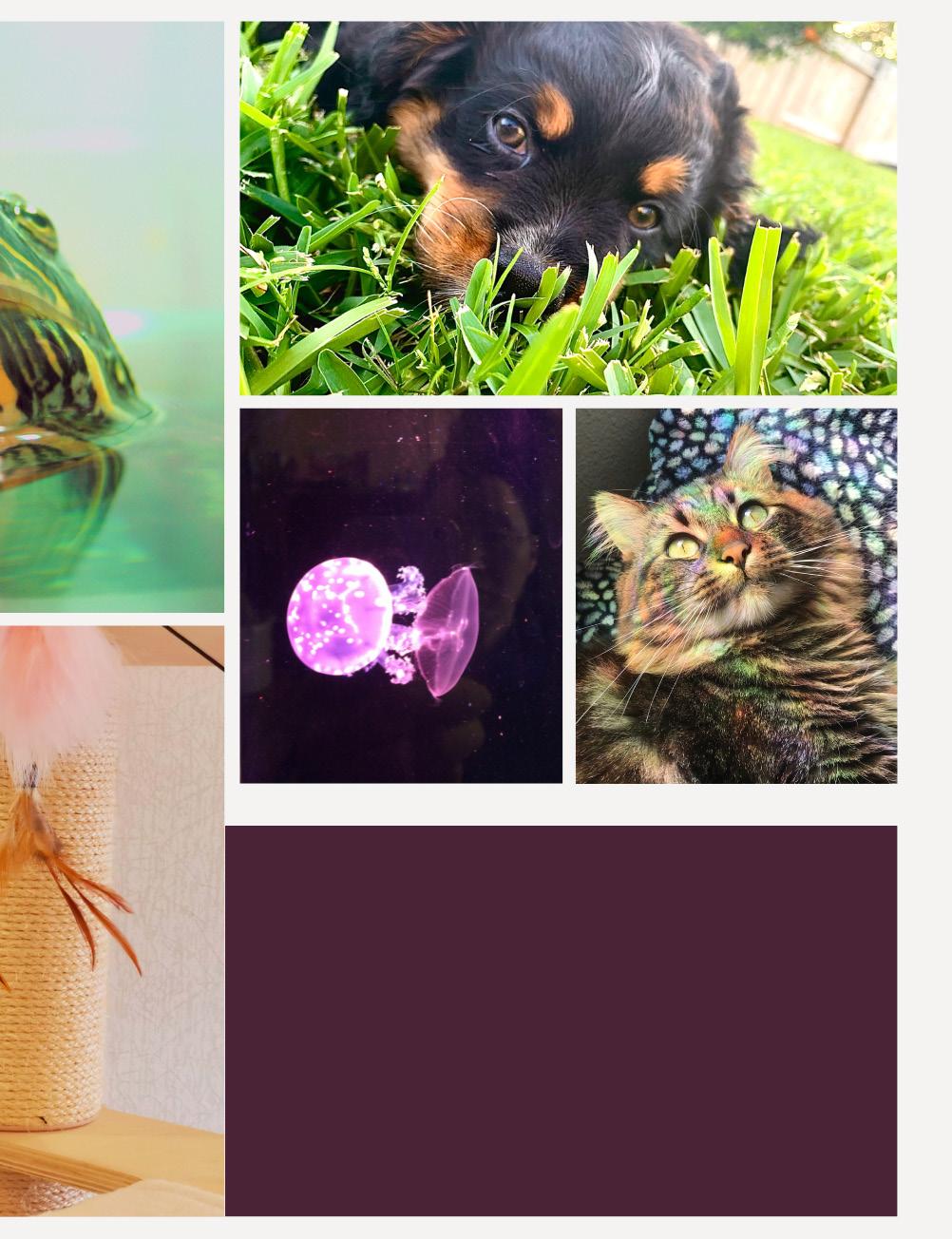 1. “FAVEROLLE THE CHICKEN” BY ANONYMOUS
2. “O’ CAPTAIN” BY SHAYNE KING, STUART, FL
3. “AFTERNOON SUNLIGHT” BY MIAOFU TIAN, WINSTON-SALEM, NC
4. “SWEET DACHSHUND DREAMS” BY CAROLINE GRIFFIN, ATLANTA, GA
5. “TOPSY-TURVY TURTLE” BY IZABELA ZELNICEK, OLMSTED TWP., OH
6. “NAUGHTY KITTY” BY LANGTIAN JIANG, FUJIAN, CHINA
7. “OSO” BY AVERY-GRACE PAYNE, HOUSTON, TX
8. “FIGHTING” BY RICHARD SIYI HE, BEIJING, CHINA
1. “FAVEROLLE THE CHICKEN” BY ANONYMOUS
2. “O’ CAPTAIN” BY SHAYNE KING, STUART, FL
3. “AFTERNOON SUNLIGHT” BY MIAOFU TIAN, WINSTON-SALEM, NC
4. “SWEET DACHSHUND DREAMS” BY CAROLINE GRIFFIN, ATLANTA, GA
5. “TOPSY-TURVY TURTLE” BY IZABELA ZELNICEK, OLMSTED TWP., OH
6. “NAUGHTY KITTY” BY LANGTIAN JIANG, FUJIAN, CHINA
7. “OSO” BY AVERY-GRACE PAYNE, HOUSTON, TX
8. “FIGHTING” BY RICHARD SIYI HE, BEIJING, CHINA
 PHOTO BY JONATHAN LEE, SUNNYVALE, CA
PHOTO BY JONATHAN LEE, SUNNYVALE, CA
From the early 18th century to the modern era
Technology — a world full of computers, types of machinery, codes, software, and applications — a word that was unknown to many women during the early 18th century across the globe, specifically in the United States. During the early 1700s, women were not intended to pursue their interests, rather, they were to remain in their domestic sphere and perform daily household tasks. However, a major shift occurred during World War II when women were able to take on wartime occupational jobs. Various mathematicians, computer programmers, and scientists contributed to their societies by showcasing their logical and problem-solving skills. During the 1700s, one of the early individuals, NicoleRein Lepautre, a French astronomer and mathematician, contributed to the field of astronomy by accurately predicting a comet’s appearance in the night sky. This paved the way for trailblazers like Ada Lovelace, who in the 1800s became known as a remarkable woman who is known as the first-ever computer programmer and scientist. Lovelace paved the way for women in technology tremendously. Her work ethic strongly portrays her inspiration to other women in the technology field.
with large machinery. According to statistics, data shows that by the year 1900, 80 percent of telephone operators were women and progressed as the main operators by the 1960s. Theories developed that led to logical thinking, and modern computer algebra emerged as a consequence. As a result of the Second World War, many women became computer programmers; however, they were not recognized highly. Moreover, in 1945 during the wave of feminism, society saw large numbers of women as computer programmers, later they would be recognized as “human computers.”
During the 20th century, society saw many individuals whose legacies and stories are still known today. Their role in the field of computer science helped shape society and modern technology. To name a few, Grace Hopper was a prominent computer scientist who created the first computer programming language all in English, and Annie Easley advocated for women in Science, Technology, Engineering, and Mathematics (STEM) fields while simultaneously working as a computer programmer at NASA. Their contributions to society have overall affected computer science and programming, which created a significant increase of women in technology.
As the timeline progresses, the evolution of women’s strengths, bravery, and courage are showcased. Factors such as the market and the industrial revolution significantly affected women’s roles in the technology field. As the need for women grew larger, during the midst of the Second World War, many women gained the experience of working in factories
Within the technology industry, statistics further illustrate that the percentage of women receiving computer science bachelor’s degrees has increased from 1970 to 2019, from 14 percent to 21 percent, respectively. During the years, the percentage peaked in 1985; however, it significantly decreased following 2019. Despite the rise of women seen in technology and engineering fields, women have also faced a significant gender gap with employment rates and lower as well as unfair wages. Although women are the minority in the technology field, they have made remarkable contributions to society that have been impactful, and their achievements will continue to stay as a legacy. All in all, the evolution of women in the technology industry has undergone significant changes. Currently, in the modern era, many advocates are raising awareness about the distinct differences in the gender gap. Ultimately, as women faced difficulty in the industries, their bravery and confidence highlighted their determination.

THEIR CONTRIBUTIONS TO SOCIETY HAVE OVERALL AFFECTED COMPUTER SCIENCE AND PROGRAMMING, WHICH CREATED A SIGNIFICANT INCREASE OF WOMEN IN TECHNOLOGY
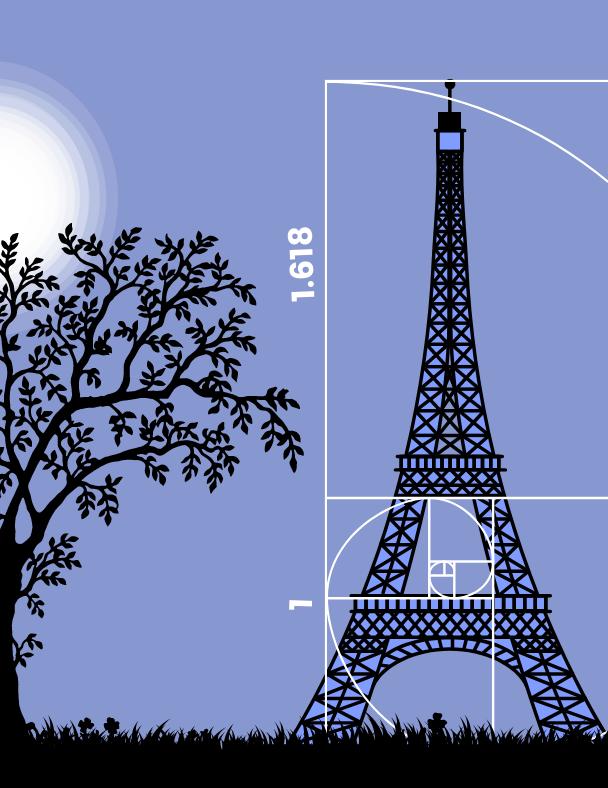 ARTWORK BY SAMIT ALAM, CUMILLA, BANGLADESH
ARTWORK BY SAMIT ALAM, CUMILLA, BANGLADESH
Mathematical Logic, as a formal discipline, relies heavily on symbolization to analyze and reason about mathematical statements and arguments. Symbolization is crucial in capturing the logical structure and relationships within these statements, enabling precise analysis, deduction, and proof. This essay explores the meaning and function of symbolization in Mathematical Logic, highlighting its importance and impact on the field.
In the context of Mathematical Logic, symbolization refers to the process of translating natural language expressions and propositions into a symbolic language or formal system. It involves assigning appropriate symbols, such as letters, connectives, and quantifiers, to represent the logical components of statements. Symbolization helps eliminate the ambiguity and vagueness often inherent in natural language, allowing for a clear and rigorous analysis of logical relationships.
Symbolization provides a precise and unambiguous representation of mathematical statements. Translating natural language into symbols, it eliminates the potential for misinterpretation or multiple interpretations. This precision allows for clear communication and facilitates a rigorous analysis of logical relationships.
It enables the application of formal logical systems and rules to analyze and reason mathematical statements. By representing statements symbolically, mathematical logicians can manipulate and evaluate them systematically. Logical connectives, quantifiers, and other symbols provide a formal framework to explore truth values, logical implications, and deductions.
Capturing the logical structure and relationships within mathematical statements, symbolization allows mathematicians to identify and analyze the components of a statement, such as predicates, variables, and quantifiers. The use of symbols facilitates the examination of how these components interact and influence the overall meaning of the statement.
Symbolization enables the abstraction and generalization of mathematical concepts. By representing mathematical statements symbolically, logicians can focus on the underlying logical structure rather than specific content. This abstraction allows for the development of general theories and theorems that apply to a wide range of mathematical contexts.
Symbolization is crucial for constructing and analyzing formal proofs in Mathematical
Logic. By representing statements symbolically, mathematicians can apply logical rules and deduction methods to establish the validity or invalidity of arguments. Symbolic representations allow for step-by-step analysis, enabling the detection of fallacies, contradictions, or inconsistencies in reasoning.
By expressing mathematical concepts symbolically, mathematicians can compare and relate different structures and theories. Symbolization enables the exploration of connections between seemingly disparate branches, promoting a deeper understanding of mathematical relationships.
Symbolization plays a fundamental role in Mathematical Logic, providing a formal language to represent and reason about mathematical statements and arguments. It brings precision, clarity, and systematic analysis to the field, enabling the exploration of logical structure, formal proof, and the unification of mathematical theories.
Symbolization serves as a powerful tool for mathematicians to advance their understanding of mathematical concepts and their interrelationships, contributing to the development of rigorous mathematical reasoning and the advancement of mathematical knowledge.
Humans have always been obsessed with the prospect of going further. We constantly send out satellites to map the stars. We dream of going to Mars, and from there, branching out into the depths of space. Our solar system. The Galaxy. Just how far can we go?
Perhaps the greatest possible limitation for us becoming an intergalactic civilization can be summed up in one word: energy. In order to advance as a society, energy is a necessity. Human civilization began by using more primitive forms of energy, such as fire. However, as societies grew, new forms of power were needed. Eventually came coal, fossil fuels, and other modern, more efficient forms of energy. As the population increases, energy must do the same. It powers our everyday life, and without it, no matter the quantity of advanced technology we have, it would be impossible to survive. If we are to truly maximize our access to technology and aim
to go beyond our planet, we would need a technological breakthrough in the way that we produce energy. The amount we would need to travel among the stars and build civilizations on other planets is unfathomable. Luckily, there is one source that can provide enough energy to do this: the sun.
In 1960, physicist and astronomer Freeman J. Dyson introduced a proposal for how we may be able to harvest the sun’s energy, resulting in the name Dyson sphere. Such a device would be a megastructure encompassing the entirety of the sun with the goal of trapping and delivering the energy of the sun to humans. In reality, a Dyson sphere would not likely be an actual spherical shape. In fact, according to most scientists, a giant solid shell encompassing the sun would not be the most practical solution, as it would be prone to impacts, liable to drifting, and could potentially crash into the sun. A more realistic solution might be a Dyson swarm, a massive set of orbiting panels that collect the sun’s power and beam it elsewhere. If successfully pulled off, this technological feat would allow our species to transform from a planetary one to an intergalactic empire.
If such a device would completely change the capabilities of humankind, why haven’t we begun developing one already? As it turns out, there are many challenges that
must be overcome in order to successfully build a Dyson Sphere, including the design of the megastructure itself. It would require satellites with a simple design, unlike the complex and short-lived solar panels we have right now. These satellites would also need to be able to operate without repairs or any human intervention for extremely long periods of time. They would also need to be extremely cheap to produce. One proposed way to create light, durable, and cheap satellites would be to create structures that are giant mirrors that refocus sunlight into central energy collection stations.
Even after a working design has been formulated, there comes the challenge of building the structure itself. Given the massive size of the sun, it would require an unimaginable number of satellites to encompass it. A video by Kurzgesagt estimates that if each satellite were a square kilometer long, it would require 30 quadrillion to surround the sun. In order to obtain just the raw materials for the Dyson sphere, we would likely need to extract all the raw materials from a planet that contains just the right substances. Even if these satellites were built as lightly as possible, it would take hundreds of quintillions of tons of materials. We would also need to have established some sort of permanent structure in space, akin to a factory, specifically for the construction of the Dyson sphere.
Besides requiring an extremely large amount of natural resources,
IN ORDER TO ADVANCE AS A SOCIETY, ENERGY IS A NECESSITY
building a Dyson sphere also requires a massive amount of energy. First, it would be necessary to take apart a planet and extract all of its resources to build the structure. Then would come the challenge of launching the satellites into their location around the sun, requiring more power output. Even if all of the fossil fuels and uranium on Earth were extracted, it would not be anywhere near the amount of energy required. This energy problem has made various scientists skeptical of the plausibility of a Dyson sphere. Since there is such a great amount of energy required to build it, many scientists theorize that the amount of energy needed would have to come from a source that could output as much energy as a Dyson sphere or a similar structure. Given that such a source would not yet exist before the creation of a Dyson sphere, it may be impossible to build one in the first place.
Despite all of these challenges, if successfully pulled off, a Dyson sphere would usher in an age of exploration unlike anything before. It would enable colonies on other worlds to have the ability to terraform (modify a planet to be habitable) other planets and the option to build more megastructures. We would be able to travel to other stars and create an interstellar civilization.
Given the fact that Dyson spheres are very logical, a requirement for getting off of a home planet, and work within the bounds of science and physics, many scientists theorize that there may already be many Dyson spheres in the Milky Way alone, built by multi-planetary species. While we haven’t spotted one yet, it does not rule out the possibility of their existence. Perhaps looking for a Dyson sphere may become our best option for finding hyperintelligent life in our galaxy.
While a Dyson sphere largely remains a science-fiction fantasy right now, it may one day become a reality, expanding the boundaries of what is possible for humanity.

From the formation of mathematics to the development of current-day technology, our society has continuously been advancing. From the 20thcentury point of view, the concept of mathematics today has improved, including but not limited to, topics in precalculus, geometry, and algebra that have all shaped one’s critical and logical thinking skills. Mathematics involves numerical values that are essential in determining solutions to problems that are included in the field of science. Throughout history, various theorems and concepts have evolved, including Euclidean geometry, named after the Greek mathematician who lived in approximately 300 BCE. Overall, with the growing progression of the world of mathematics, thousands of people have experienced a significant shift in concepts due to modernday technology.
Euclid is commonly referred to as the “Father of Geometry’’ in ancient times. He was born in Greece, where he dedicated his life to the study of mathematics, creating several pieces of work revolving around the fundamental basics of math. In his book, titled The Elements of Euclid, he constructed different axioms and postulates — findings based upon logical rationales — that would later tie in together with his work. One of his postulates directly states, “To describe a circle with any center and distance.” With the creation of his theories, he was able to construct Euclidean geometry, which derived from several of his axioms that illustrated the structure of shapes and figures.
Additionally, throughout his writing, Euclid captured
mathematical concepts in algebra, like how to determine the square root of a radicand. Other than Euclid’s discoveries and theories, he has played a vital impact on civilization. For example, several people have examined his work in The Elements of Euclid, and have found his logic and reasoning to be sound. In other words, his work has impacted the world around him by allowing a new way of life and logic. Euclid has played a vital role in society — he brought up new theories and a careful analysis of geometric shapes in particular. In his work, he has also emphasized the findings of several other scientists, such as Pythagoras and Hippocrates. I find Euclid’s work to be significant in today’s society as it demonstrates the early beginning of current-day mathematics. Additionally, Euclid theories have been looked upon today by other mathematicians as a guide to the future: a classical way of analyzing timeless mathematical ideas.
Euclid’s creations have formed a foundation for several scientists throughout the centuries. Although his works have been criticized by a few; his reasoning and theorems have added to the formation of previous works published by other mathematicians. All in all, from comprehending his theories published in The Elements of Euclid, many have become informed of new mathematical and technical reasoning behind geometric figures.
Euclid’s creations have formed a foundation for several scientists throughout the centuries
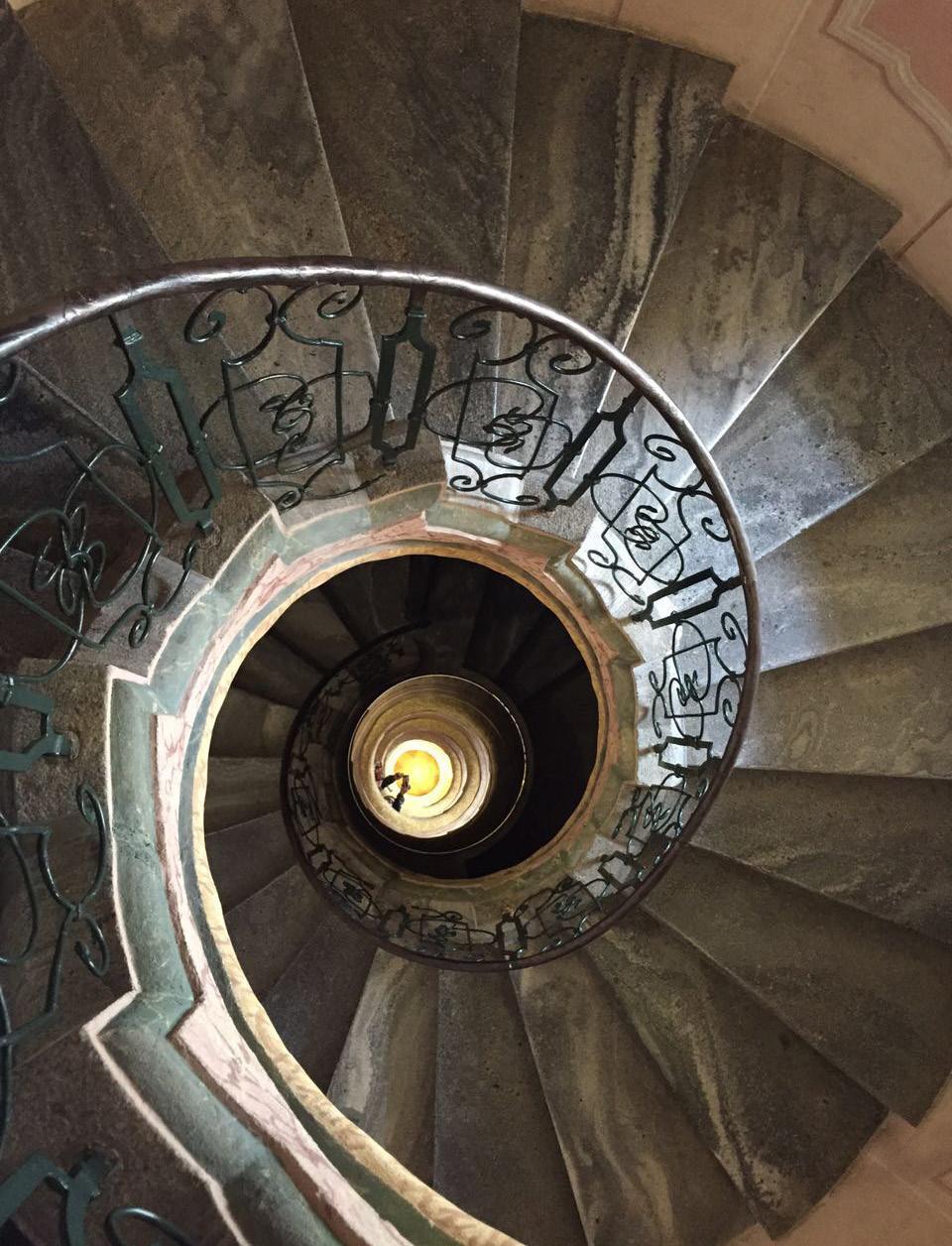

When asked about female scientists who inspired younger generations of girls to pursue scientific study, the first person that comes to most people’s minds is Marie Curie. And that isn’t surprising. Not only is she the first woman to win a Nobel Prize, but she is also the only person to win two Nobel Prizes in two different disciplines — physics and chemistry. However, despite her remarkable accomplishments, she is not the first female scientist. Before the world knew Marie Curie, there were numerous other determined young women who left their mark on the STEM fields. In particular, Ada Lovelace, who was known as “the first computer programmer.”

What was special about Lovelace and what set her apart from other women in her era was that she was encouraged to learn mathematics. Lovelace’s parents divorced when she was only five weeks old. Lady Byron, her mother, took Lovelace and became obsessed with the idea of educating her. Lady Byron was scared that if Lovelace went down the same path of “imaginative self-indulgence” Lord Byron had, Lovelace would succumb to a fate of madness. So, Lady Byron turned to math as a way of “taming” Lovelace’s imagination. For most of her childhood, Lovelace was educated by tutors hired by Lady Byron. However, when she was 17, she met an English polymath named Charles Babbage, who became her greatest aid in exploring mathematics. They bonded over a project that Babbage was working on, called the “Difference Engine.” It was meant to do calculations without error, somewhat similar to the modern calculator, but, eventually, Babbage
gave up on it. Later, Babbage started on a new project called the “Analytical Engine,” the world’s first digital computer. The creation of this machine was when Lovelace’s influence truly shone through.
In 1842, Babbage met Luigi Menabrea, a mathematician who agreed to write a paper about the “Analytical Engine.” They published the 8,000word article in a Swiss academic journal and asked Lovelace to translate it from French to English. Her translation included several of her own notes and totaled up to 20,000 words, more than twice the original length. In her translation, Lovelace explained with great clarity regarding the foundation of the “Analytical Engine” and how it might operate. She even wrote that “[t]he science of operations, as derived from mathematics more especially, is a science of itself, and has its own abstract truth and value.” Although not known by its modern name, this marked the beginning of the field of computer science. For the very first time, the science of operations was seen as something distinct from the field of mathematics. Lovelace’s contribution to this paper was also her greatest contribution to computer science. Later on, historians would speculate whether her contributions truly were that “great” and whether her contributions were overstated. Despite this, Lovelace’s story continues to resonate with other female scientists as it recognizes that there will always be people who seek to discredit female achievements. However, pushing past those challenges and contributing to scientific exploration is the ultimate goal all scientists should strive to complete.
As we grow up, it becomes increasingly natural for the people around us to lose contact with the hobbies that were once so dominant in their lives. And eventually, the same may be true for us as well. While this is painful to accept, this new reality becomes the norm for some of us as we face new academic, adult, and career responsibilities.
I’ve been dancing since I was four and plan to continue dancing in college. However, I’ve always feared that dance would fade out of my life after college and become just a brilliant memory of my childhood. But what if this didn’t have to be the case?
After learning about Sommer Gentry’s story from the Association for Women in Mathematics PlayingCards project, I am convinced that through constructing an interdisciplinary path between dance (or any of my non-academic interests) and my academic passions, there is a way for me to keep both equally important parts of my future life as well.
Sommer Gentry, previously a mathematics professor at the U.S. Naval Academy and a coach at the Naval Academy’s Swing Dance Club, is currently a faculty member at the Department of Surgery and Population Health at NYU Grossman School of Medicine. Gentry
and her husband, whom she met through swing dancing, also started a swing dance community in Baltimore to introduce nondancers to the craft.
In a 2004 interview for the Massachusetts Institute of Technology, Gentry said teaching inspired her “to view dancing from an engineering point of view. ‘I realized it was an engineering question: How do you dance well with someone? It would be great to give people mathematical and engineering proofs of why they have to dance the way I say.’” According to ScienceDaily, while she was a graduate student at MIT, Gentry investigated the “complex haptic communication behind the often-improvised moves in swing dancing” and showed that two beings could move in coordination with pure haptic communication. Roderick Murray-Smith, a researcher who collaborated with her, said, “‘Sommer is entering an exciting area of research which is between engineering, psychology, and human motor-control studies. It could be of importance for sports training or rehabilitation engineering — the study of how to use technology to help humans overcome disability or injuries.’” It’s incredibly inspiring that Gentry was able to intertwine her academic work with her passion for dancing. Gentry says that by “melding her hobby with her work...means that even when I’m out dancing, I’m thinking about my research project.”
I love that she found that delving into her academic interests in STEM did not mean letting go of her other non-academic ones. Instead, she fully embraced both and found a way to incorporate both into her professional life. Just like me, Gentry is a mathematician and a dancer; thus, her story resonates strongly with me, and I aspire to be like her in the future.

I LOVE THAT SHE FOUND DELVING INTO HER ACADEMIC INTERESTS IN STEM DOES NOT MEAN LETTING GO OF HER OTHER NONACADEMIC ONES
Astrophysics for People in a Hurry is one of the most gripping books I have read on the subject. Written by Neil deGrasse Tyson, this book is true to its name. It is perfect for “all those who are too busy to read fat books, yet nonetheless seek a conduit to the cosmos,” as the author himself has said. The book takes us on an unforgettable journey of the universe, stopping by stars and galaxies, and eventually reaching the edge of it all. It explains some of the most profound concepts of astrophysics in a simple and interesting manner, making it impossible to put down.

The first chapter, “The Greatest Story Ever Told,” is the story of how our universe was born. Tyson has explained every phase of our universe’s life, right from when it was a hot and dense spinning gas cloud to what it is today. Fourteen billion years in 17 pages, with no compromise when it comes to detail. That is what I call amazing writing. The universe was initially a
soup of matter and antimatter particles coming together and destroying each other. But a little asymmetry caused matter to outweigh antimatter, allowing objects to form. Initially, the universe was hot enough for the fundamental particles (quarks, leptons, etc.) to exist independently, but were eventually forced to come together and form protons and neutrons, leading to atoms, molecules, and so on.
The laws of physics are universal. Tyson has devoted the next chapter to this very thought. Knowing that the phenomena we experience everyday are the same everywhere in the universe helps us connect to the subject better. This book focuses on specific topics crucial to our understanding of the universe (or at least, our trying to understand the universe), such as gravitational waves, the electromagnetic spectrum, the ever-favorite dark matter and dark energy, and many more. These topics are explained in a fundamental manner. So, anyone and everyone can understand this book with no previous background.
Exoplanets, aliens, life beyond earth are topics that always arouse our interest. This book is our passport to journey beyond the Milky Way, to Earth-like planets orbiting Earthlike stars. The author has discussed in detail the possibility of extraterrestrial life, and how new technology has enabled us to find innumerable planets outside our galaxy.
Even though we have come such a long way in our search for meaning in life, the universe is full of new surprises. This book introduces us to the amazing world of astrophysics, and shows us how many more secrets there are yet to be unraveled. Tyson concludes by putting the cosmos into perspective: the Earth is nothing but a tiny speck in an unimaginable universe. This book truly humbled me and made me realize the unfathomable power of the universe. It is one of my favorite books, and I highly recommend it
to anyone yearning for a glimpse into the magical universe.
Chemistry follows a young scientist as she embarks on a journey of self-discovery. Watch as she comes to terms with the expectations of others, her own idea of success, and ultimately, her own desires in life, over the course of two rocky years. In this inspiring novel, author Weike Wang weaves a witty, quirky, and deeply moving story that resonates intimately with students and young adults everywhere.
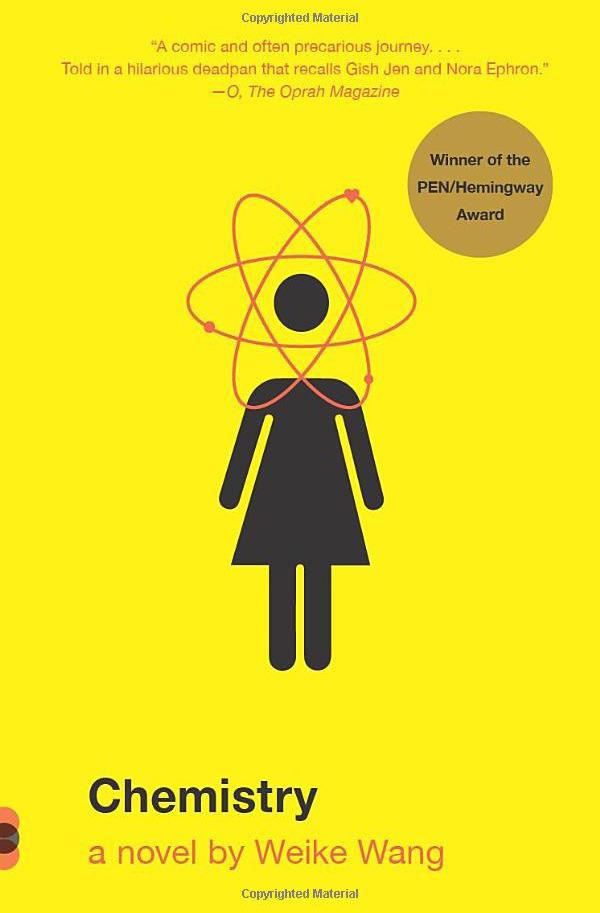
The style of Chemistry is sparse and charming. The narrator, as the title suggests, is closely entangled with chemistry, in fact a Ph.D. student specializing in the science, when we first meet her. As such, her narration is filled with references to various laws, facts, and notable figures, which can feel both overwhelming at times and deeply charming. Beyond this, each scientific reference is
connected with the themes of the book, and prompts the reader to pause, read back, and reanalyze. This is paired with the simplicity and bareness of the writing, which even lacks the traditional quotation marks to signal the start and end of dialogue and is perpetually in the present tense. The train-of-thought style of narration — interjected with sudden flashbacks, science facts, anecdotes, and existential ponderings — is utterly strange and confusing and gives the sense of being tossed about in this young woman’s tangled, searching mind. I loved every second of reading it, especially the dialogue between the narrator and the other nameless characters; it was always so weird and real and funny, always provoking some deeper consideration of what their words might really be saying.
Something that stuck with me particularly was Eric, the narrator’s fellow scientist and boyfriend, with whom she eventually parts ways. It was absorbing and heartbreaking to see the gradual deterioration of their relationship and of his love through dialogue alone. Pricelessly, Wang communicates Eric’s bright, undying love at the start of the book in his words to the narrator. They are tender, considerate, and forgiving, even when she refuses to answer or even discuss his marriage proposal for pages on pages. As the story progresses, we start to see his feelings dampen; he begins to respond to the narrator’s often thoughtless and unreasonable words more coldly than before, with less patience and undying dedication. To the very end, we see him try again and again to make their relationship work, though ultimately, he must come to terms with the unfortunate reality. It is stunning to watch an emotional progression executed with such subtlety and authenticity by Wang.
Whether in regards to her treatment of Eric or her other questionable behaviors, the narrator herself often comes off as unlikable. With Eric, it can become difficult for the reader to root for her through all her apparent
indecisiveness and lack of consideration for her boyfriend’s feelings. The marriage proposal — around which much of the book is based — provokes countless questions of why? Why does the narrator act with such ungratefulness and even outright emotional cruelty to Eric, who is such a perfectly kind and wonderful boyfriend? Why doesn’t she simply say yes to his proposal, making it a happy ending for all? Wang answers our questions. She fleshes out this often frustrating young woman with insights into her academic career and childhood, shedding light on her deepest personal struggles — her obsession with comparing herself to others, unable to be satisfied with her own achievements when there will always be someone with greater ones.
We see this when she compares herself constantly to the other, more accomplished scientists in her lab, with her successful best friend, and with Eric himself. This is the fundamental reason why she cannot accept his proposal. Eric is white, born into an adoring household that showers him with the love and support that the narrator has never received from her strict Chinese parents, and as a scientist, he is effortlessly successful. The narrator sees him leaving her behind as he completes his Ph.D. and makes plans to advance ahead into a bright future, while she struggles to complete her own Ph.D. and eventually drops out. She can’t see herself making a life with him unless, in her own words, she is able to “catch up” with him. As, of course, we know she will never be able to do so in her definition of the words, so their relationship is sadly doomed to end.
Overall, Wang writes a complex, sympathetic character into existence, which we are able to understand and support even as she appears to turn away from “happiness” for herself and others. Her journey is full of ups and downs, mistakes and questionable choices, but those are what make her so human. Because of her flaws,
quirks, and above all, her ability to learn and grow from her experiences, we as readers are able to wholeheartedly root for her when she reaches a degree of reconciliation by the book’s end.
Through her brilliantly written narrator, Wang tackles a series of difficult and particular themes. One of the narrator’s major personal struggles is her unbreakable habit of judging her success in relation to others, which hinders not only her career but also her relationships with the people important to her. Wang connects this with the narrator’s childhood — more specifically, her parents. Through heart-wrenching flashbacks and dialogue, Wang illustrates the bittersweet relationship of a Chinese-American family, commenting on the often unattainable expectations and harsh ideals imposed upon young Asian-American children by their immigrant parents. While making clear the unhealthy consequences that result from such an upbringing, Wang also explores the nuances in the subject that are frequently overlooked by writers discussing the same topic. The narrator, while aware of the negative effects her parents’ actions have had on her, still steadfastly sees them in a blameless light, even as those around her are bewildered by this. Wang writes about this topic in a way that is understandable only to other Asian-Americans, displaying the deeply flawed and yet inarguably beautiful nature of Asian parents’ relationships with their kids. She explores the relationship between the narrator’s parents as well, and what it means — especially for her mother, a woman — to make sacrifices for the sake of a family, and to achieve success and independence simultaneously. Reading about the narrator’s parents, we are able to understand, at a deeper level, what has made her the way she is, and makes us wonder how she will grow from the damage her childhood has nonetheless wrought. All in all, Chemistry is a masterpiece of a book that is smart, unique, and
brilliantly insightful. It is intimately relatable to those navigating young adulthood, discussing everything from experiencing the pressures of being a student, to growing in the relationships with those close to you.
A Brief History of Time by Stephen Hawking, the most brilliant scientist of his generation, covers all areas of 20th-century physics, from quantum to the universe itself, and from the Big Bang to the Big Crunch. It targets non-specialists in physics and inspires people like me to explore the wonders of our universe.
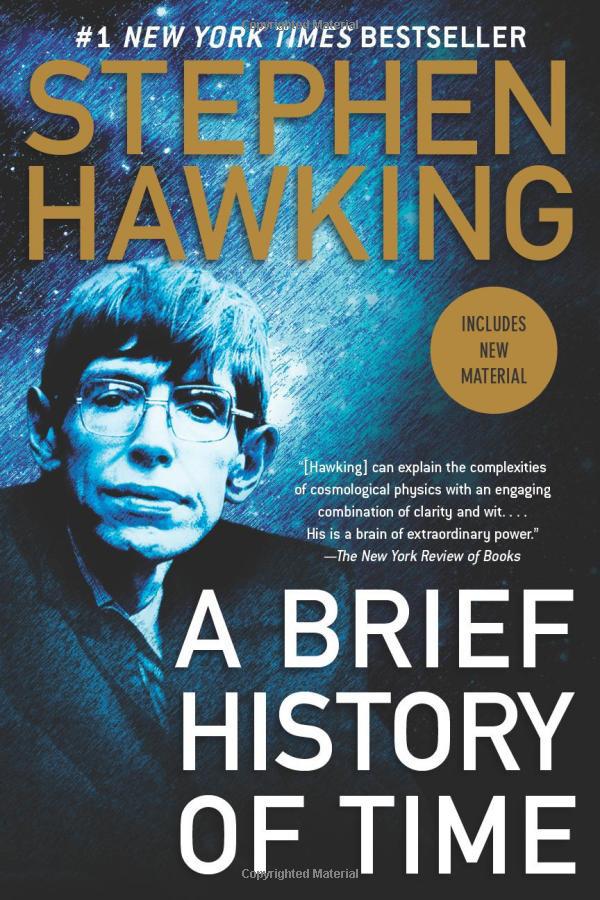
One of the most compelling themes in this book is the idea of God. Galileo, in the 16th century, spent his life convincing the church that the Earth revolves around the sun, a very controversial and dangerous thought at that time. Einstein, in his later life, became a Christian and rejected randomness (“God does not play dice,” later
proved wrong by the uncertainty principle). Hawking himself believes that if God exists, which he is very skeptical about, He could choose the laws of the universe at, and only at, the start of the universe. Most physicists have tried to combine the concept of God with the fundamental rules that govern us. Thus, the question remains: Does God exist? And if He does, what is His relationship with the laws of physics?
The book also discusses the beginning and end of the universe. How did the universe start, and in what ways could it end? The beginning is referred to as the Big Bang: according to Einstein’s General Relativity, there was a singularity of infinite energy and density at the Big Bang, which strongly signals the incompleteness of the theory. Since then, the universe has always been expanding, but in time, it will begin to contract, all the way to the supposed singularity again. This is the end of the universe, referred to as the Big Crunch.
Several more topics are discussed in this book, including black holes, time travel, quantum theory, and relativity. The last chapter is the unification of physics, a belief that there should be one unified theory of physics that can describe how the world functions. The idea is not new, as people from the past hoped this would predict future events. However, even if there is unification, one could not predict the future because of the uncertainty principle. Furthermore, if there is unification, one must predict that we would try to predict the unification itself, which again must be itself proved. It seems rather paradoxical in general. But, if we do find a unified theory in the future, the era of human civilization conquering physics would come to an end.
This book is a door that opened me to the mysteries of physics; every time I put it down, I would look around and see the wonders of my world with a new understanding.
in a world where righteousness is circular, where war eclipses love, where standards are abandoned and picked up at one’s will, my love for ap chemistry prevails.
your smiling teeth, checkered with fluorine and calcium, are always sharp and ready, glistening with a hungry shine.
when i am down, you stay by me, pipetting acid base reactions into my ear as sweet nothings. you watch me gently sink into a solution of my own salt, density growing heavier and heavier

how deceiving you were, when we first met! your simple exterior of “sigfigs” and naming patterns emboldened me, but soon i was within the coy grasps of your vines before i even knew what odorous smell hit me
you complete me, ap chemistry that is to say you have swallowed me whole
POEM BY JIAYIN ZOU, MCLEAN, VA
PHOTO BY ANONYMOUS


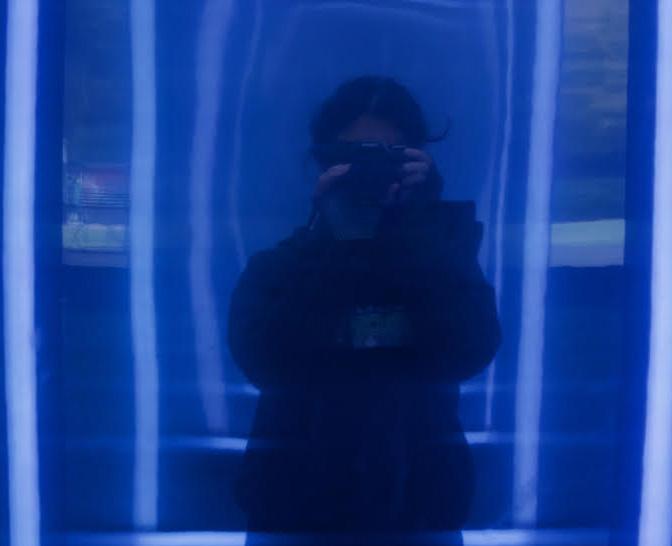
Alec Damon, 6
Kathryn Ortmeier, 80
Lucas Nelson, 10
Frankie Moreno, 14
Carson Ling, 16
Anjuli Irvin, 18
Anonymous, 20
Kennedy H., 22
John Fletcher, 24
Christopher Cho, 27
Academic
Rhea Yadav, 32
Xianjie Yang, 35
Liam Lobl, 36
Heroes
Kaajal Yadav, 38
Erica Pan, 40
Erica Pan, 41
Shivani Patwardhan, 42
Ming Wei Yeoh, 43
Spencer Wang, 44
Jiayin Zou, 45
Contest
Eva Lependorf, 28
Kate Monchak, 28
Sanzhar Magzhanov, 28
Madilyn Charles, 28
Noah Hawes, 28
Sanjana Kanumuri, 29
Anonymous, 30
Shayne King, 30
Miaofu Tian, 30
Caroline Griffin, 30
Izabela Zelnicek, 30
Langtian Jiang, 30
Avery-Grace Payne, 31
Richard Siyi He, 31
Camille Mcclafferty, 31
Art Galleries
Juri Kim, Front Cover
Antigone Stanley, 6
Managing Editor: Noelle Campbell
Consulting Senior Editor: Cindy W. Spertner
Associate Editor: Kylie Andrews
Sales Account Executive: Sara Shuford
Miaofu Tian, 8
Soeun Lee, 10
Miaofu Tian, 12
Breanna Fletcher, 12
Zhile (Julia) Zhou, 12
Viktoria Anokhina, 12
Danielle Motta, 14
Eimy Romero, 16
Alisha Malandkar, 18
Isabella Wang, 20
Caitlyn Gillman, 22
Ruolan Wang, 23
Zixuan Qi, 26
Jonathan Lee, 32
Samit Alam, 34
Anonymous, 37
Yutang Shan, 39
Ela M., 40
Genevieve Gungor, 41
Anonymous, 45
Anonymous, 46
Shayne King, 46
Jayda Wang, 46
Eboni North, 46
Miaofu Tian, Back Cover
